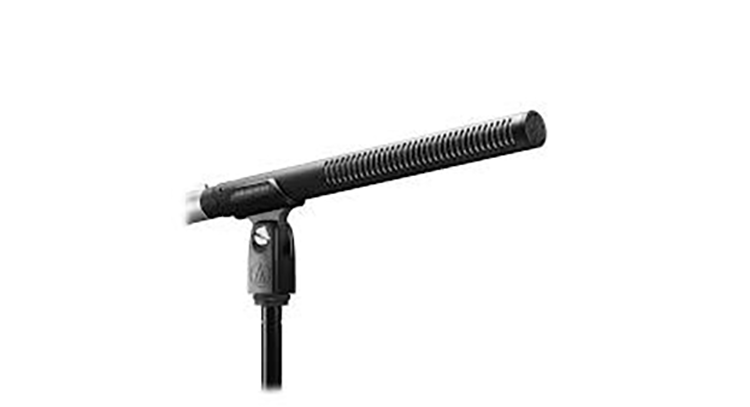In the dynamic world of audio production, capturing crystal-clear sound is an art that demands precision and quality equipment.
Whether you’re shooting a film, recording a podcast, or working on a documentary, the importance of clean audio cannot be overstated.
In this article
- Understanding Shotgun Microphones
- Rode NTG3
- Sennheiser MKH 416
- Comparing the Titans: Rode NTG3 vs. Sennheiser MKH 416
- Sound Quality
- Build and Durability
- Price Point
- Applications
- Conclusion:
Sign Up for Free Today
Find the perfect voice for your job today, or sign up as a talent to start booking voice over work on Voices.
In this blog post, we’re diving into the world of shotgun microphones, with a focus on two standout models: the Rode NTG3 and the Sennheiser MKH 416.
These microphones are revered by audio professionals for their exceptional performance and ability to capture sound with remarkable accuracy.
Understanding Shotgun Microphones
Before we delve into the specifics of the Rode NTG3 and the Sennheiser MKH 416, let’s take a moment to understand what makes shotgun microphones so special.
These mics are designed to pick up sound sources from a specific direction while rejecting ambient noise from other angles.
This directional characteristic is particularly valuable in scenarios where background noise can easily infiltrate your recordings.
Rode NTG3
The Rode NTG3 stands tall in the world of shotgun microphones with its impeccable build quality and impressive sound-capturing capabilities.
This shotgun microphone boasts a supercardioid polar pattern, allowing it to focus on the sound source directly in front of it while minimizing off-axis noise.
One of the standout features of the NTG3 is its RF bias technology, which enables the microphone to perform flawlessly in humid and demanding environments.
This makes it a go-to choice for outdoor shoots where weather conditions can be unpredictable. The NTG3 also boasts a low self-noise level, which ensures that your recordings are clean and devoid of unwanted hiss.
Sennheiser MKH 416
Another heavyweight in the shotgun microphone arena is the Sennheiser MKH 416.
Known for its exceptional off-axis noise rejection and supreme clarity, this microphone has long been favored by professionals in the film and broadcasting industry.
The MKH 416 features a hypercardioid polar pattern, making it particularly effective in isolating sound sources and eliminating unwanted background noise.
Its rugged build and impressive durability further contribute to its popularity, making it a reliable choice for field recording and location sound.
Comparing the Titans: Rode NTG3 vs. Sennheiser MKH 416
Both the Rode NTG3 and the Sennheiser MKH 416 have earned their stripes in the competitive world of audio production, but let’s break down their key differences to help you make an informed choice based on your specific needs.
Sound Quality
Both microphones offer exceptional sound quality, capturing every nuance of your subject.
The NTG3 tends to deliver a slightly warmer sound, while the MKH 416 leans towards a more neutral tone. This distinction can influence your choice based on the desired audio coloration for your projects.
Build and Durability
The MKH 416 has a reputation for being virtually indestructible, making it an ideal choice for demanding shooting environments. On the other hand, the NTG3’s RF bias technology enhances its resilience in humid conditions. Depending on where you’ll primarily use your microphone, this could be a deciding factor.
Price Point
Budget is always a consideration, and here the Rode NTG3 holds a slight advantage. It offers exceptional performance at a more budget-friendly price compared to the Sennheiser MKH 416.
This factor might sway those looking for quality without breaking the bank.
Applications
Both microphones excel in various scenarios, but the choice between them often boils down to personal preference and specific application requirements.
The MKH 416’s reputation in the film industry is well-established, while the NTG3’s versatility appeals to a broader range of content creators.
Conclusion:
In the realm of shotgun microphones, the Rode NTG3 and the Sennheiser MKH 416 are two names that stand tall, each with its own set of strengths and qualities.
Whether you’re a seasoned professional or a budding content creator, both microphones have the potential to elevate your audio game.
The Rode NTG3 impresses with its RF bias technology and warm sound signature, making it a reliable companion in challenging environments.
On the other hand, the Sennheiser MKH 416’s legendary durability and neutral sound profile make it a staple in the film and broadcasting industry.
Ultimately, the choice between the two microphones will depend on your individual preferences, budget constraints, and the nature of your projects.
Whichever path you choose, investing in a high-quality shotgun microphone like the Rode NTG3 or the Sennheiser MKH 416 is a surefire way to capture audio that’s nothing short of remarkable.
So go ahead, take your pick, and let your creativity shine through impeccable sound quality.

Leave a Reply